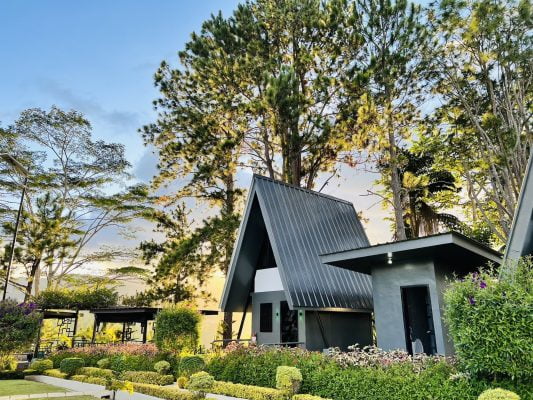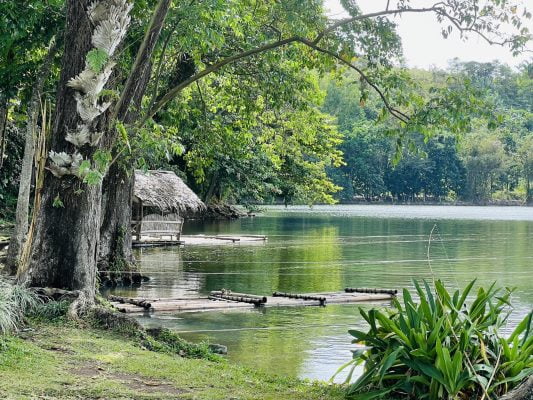You read about certain places in books or see them on the Internet all the time. But visiting them is an entirely different experience. It gives you goosebumps and a sense of unrivaled satisfaction. Seeing the UNESCO World Heritage Sites in the Philippines, for most, is an achievement. I would know! The first time I laid eyes on the Ifugao Rice Terraces when I was in 8th grade is something I still remember vividly even now that I’m in my 30s.
UNESCO named six World Heritage Sites in the Philippines because of their beauty and/or significance to Filipino natural and political history. You can find these sites scattered all over the country, mostly in Luzon, one in the Visayas, and one in Mindanao.
The baroque Catholic churches and lingering Spanish architecture tells of the Philippines’s fascinating history as a Spanish colony for 333 years. The tumultuous three centuries of slavery, caste systems, and uprisings shaped the culture of the modern Filipino.
Through the years, the country has endured and its natural beauty fairly preserved. It has become one of the tourism gems of southeast Asia and its beaches have lured millions who want to escape their bitter winters.
Baroque Churches
Paoay Church in Ilocos Norte

The Ilocanos call this icon Saint Augustine Church or simply, Paoay Church. The wonder of architecture is famous for the giant buttresses on its sides and rear. Completed in 1710, the church still stands to this day as a National Cultural Treasure and UNESCO World Heritage Site. Ilocos Norte is also home to other known attractions like Pagudpud Beach, Bangui Lighthouse and Windmills, Kapurpurawan Rock Formations, and the Malacanang of the North, among others. While you’re touring, make sure to taste famous Ilocano delicacies like empanada and bagnet.
Santa Maria Church in Ilocos Sur

The Santa Maria Church (Church of Our Lady of the Assumption) sits atop a hill, an imposing structure made of brick and mortar looking over the town of Santa Maria, Ilocos Sur. The citadel served as both a fortress and a center for the government during the Spanish colonial era. And today it still serves as a place of worship for Catholics as well as an attraction for tourists who leave in awe of its beauty and sheer size. The church is in the same province as Vigan – one of the most popular world heritage sites in the Philippines (see below).
San Agustin Church in Manila

This UNESCO World Heritage Site is located in the historic heart of Metro Manila: Intramuros. Governed by the Order of St. Augustine, San Agustin Church (Immaculate Conception Parish) has undergone several renovations over the centuries. The first structures were made of nipa, then of wood, before it came to be the stone church it is today. The San Agustin Church is the oldest stone church in the Philippines. Around the church is one of the most historic sites in the Philippines – the walled city of Intramuros or Fort Santiago. Spend a day in the walled city and soak in the history and culture. Imagine the heroes who walked the hallowed halls and relive Jose Rizal’s execution that triggered the revolution.
Miagao Church in Iloilo

The fourth Baroque Church in the collection is Miagao Church in the beautiful town of Iloilo. The church’s ornate façade features a bas-relief influenced by cultures that have shaped the town over the centuries. Miagao Church was first built in the late 18th century and has endured several relocations, rebuilding, and restorations. The church owes its noticeable ochre color to the limestone, adobe, coral, and eggs used to build it centuries ago. If you’re arriving through Iloilo on your way to Boracay, the church is a great side trip.
Historic Town of Vigan

One of the most visited UNESCO World Heritage Sites in the Philippines is the historic town of Vigan. The cobblestone streets will take you back to the old Philippines when people lived in Spanish colonial houses and everyone got around in calesas (horse-drawn carriages). Roam Calle Crisologo’s cobblestones on foot or on a calesa. Gape in awe at the magnificent Vigan Cathedral and then enjoy a sumptuous meal in the romantic atmosphere of Plaza Salcedo. Vigan is a romantic adventure you want to tick off your list.
Puerto Princesa Subterranean River National Park

Known as the Philippines’ last frontier, the island of Palawan offers some of the most breathtaking sites in the Philippines. One of these is the Puerto Princesa Subterranean River National Park. The park features a karst limestone cave with an underground river that empties out into the sea. A tour will take you from the mouth of the river, into the cave with spectacular rock formations, and then to the brackish waters where the sea begins. It’s a unique nature tour that’s one for the books!
Ifugao Rice Terraces

The Filipino’s ingenuity is best exemplified in this natural wonder in the Cordilleras. The Ifugao people’s deep-seated respect for nature and religious passing on of traditions has literally paved and sculpted the rice terraces that we see today. The terraces are 2000 years old, still standing proud to this day as an evolving monument of the Ifugao culture. This attraction can be a great side trip if you’re visiting Baguio, the summer capital of the Philippines.
Tubbataha Reefs National Park

Also located in Palawan, the Tubbataha Reefs Natural Park is a gem that is home to one of the best reef systems on Earth. It serves as a habitat for the most endangered marine species. With its diverse coral reserves, the park is the world’s center for marine biodiversity. Scuba divers, both seasoned and beginners, consider the beautiful underwater landscape the ultimate diving destination. The islets in the area are also nesting sites for sea turtles, and migratory and endemic bird species.
Mount Hamiguitan Range Wildlife Sanctuary

Bonsai cultivation is an expensive art. But in this corner of southern Philippines, miniature trees grow naturally as a result of nature’s resilience under adverse conditions. These trees are just one of the endangered flora and fauna this natural reserve is home to. The total is close to 1400 species, the Philippine eagle and Philippine cockatoo, among them. The Mount Hamiguitan Range flanks beautiful Pujada Bay, also a must-visit attraction in Davao Oriental. The government has temporarily closed this UNESCO World Heritage Site in the Philippines.
The Philippines is rich in natural, historical, and man-made wonders. It’ll be a missed opportunity to not see at least one during your visit. Have you visited any of the places listed above? Share your experiences on our Facebook page!






